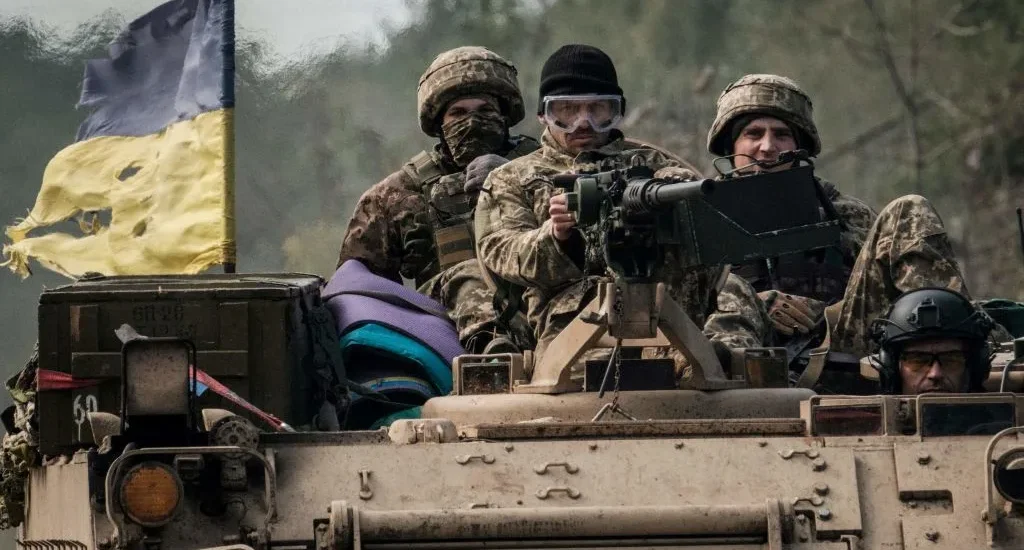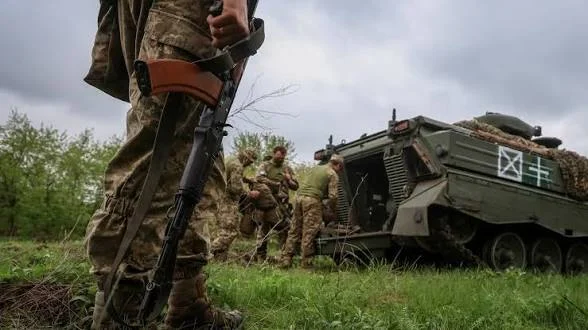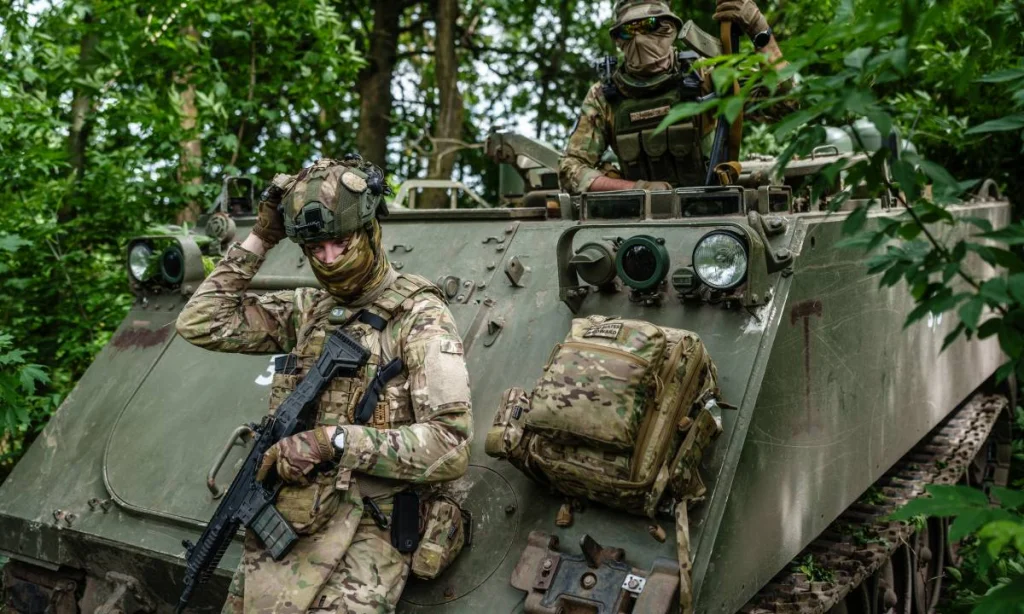
Rybne Has Fallen:
In a conflict where territorial gains are measured in meters and victories counted in ruined villages, the fall of Rybne on November 9, 2025, represents something more ominous—the potential unraveling of Ukraine's defensive architecture in the strategically vital Zaporizhzhia region.
The Yanchur River couldn't stop them. Neither could the 110th Separate Mechanized Brigade, dug into defensive positions that had held for months. When assault units of Russia's 37th Guards Motorized Rifle Brigade crossed the waterway and captured Rybne on November 9, they didn't just take another dot on the map. They breached the last fortified position along a defensive line that military analysts now describe as completely compromised.
The Last Village on the Yanchur
Rybne sits approximately 17 kilometers north of Huliaipole and 36 kilometers west of the strategic town of Velyka Novosilka, positioning it at the junction where Ukraine's Zaporizhzhia and Dnipropetrovsk regions meet. The village itself—home to perhaps a few hundred people before the war—would barely merit attention in peacetime. But in the brutal arithmetic of this conflict, geography is destiny.
The Russian Ministry of Defense described Rybne as "one of the key and most fortified nodes of the enemy's defense on the left bank of the Yanchur River," noting its occupation as strategically significant. Military correspondent Julian Röpke, who has covered the Zaporizhzhia front extensively, confirmed that with Rybne's fall, the defensive line along the Yanchur River has been breached along its entire length.
"The defensive line had been breached along its entire length, and Russian troops had crossed to the river's western bank. Ahead lay the Pokrovskoe-Hulyaipole highway, as well as the Ukrainian Armed Forces' Hulyaipole group itself."
— Analysis from military observers
A Cascading Collapse
The fall of Rybne didn't happen in isolation. Over the past week, Russian forces have systematically dismantled Ukraine's defensive positions in the region with a speed that has alarmed military analysts on both sides. The capture of Uspenovka on November 7—described as the second-largest settlement in the Huliaipole district—opened a direct route to Huliaipole from the north.
Then came Novomykhailivka, Pavlivka, and Privolne. In just 24 hours between November 6 and 7, three settlements fell. German military analyst Julian Röpke called the pace "extremely rapid," noting that Russian forces were capturing territory at a rate not seen since the early months of the invasion.
The 110th Separate Mechanized Brigade, tasked with holding the Yanchur line, suffered what Russian sources describe as "heavy losses." After being driven from Uspenovka, the brigade attempted to make its stand at Rybne. According to Russian military reports, Ukrainian forces lost approximately a platoon of personnel along with armored vehicles and automobiles during the final battle for the village.
Similar pressure is mounting across multiple fronts, as detailed in how Pokrovsk's potential fall could reshape the war's trajectory, creating a broader strategic crisis for Ukrainian forces.
The Huliaipole Problem
Every conversation about the Zaporizhzhia front eventually arrives at the same destination: Huliaipole. The small city, population roughly 15,000 before the war, has become the linchpin of Ukrainian defenses in the region. It's also, increasingly, a city under siege from multiple directions.
The front line has pressed against Huliaipole from the south since the earliest days of Russia's full-scale invasion in February 2022. For nearly four years, the city has endured constant artillery bombardment and drone strikes while serving as a logistics hub and garrison for Ukrainian forces holding the southern Zaporizhzhia front.

Now, with Russian forces advancing from the northeast through Uspenovka and from the east through Rybne, Huliaipole faces the prospect of encirclement. Military experts warn that the city may soon find itself in what they describe as a "pocket of fire"—surrounded on three sides with severely compromised supply lines.
The Logistics Nightmare
Wars are won and lost on logistics, and Huliaipole's supply situation is deteriorating rapidly. The city relies on three main roads for resupply and reinforcement. The southern route from Orikhiv has been under constant Russian fire for months. The road to Zaliznychne, just seven kilometers from the front line, has effectively ceased functioning as a meaningful supply artery.
That leaves the two roads running north along the river banks—and these are precisely the routes that Russian forces can now interdict from their positions around Rybne and Uspenovka. Ukrainian military experts quoted in regional reports acknowledge that Russian troops "have the opportunity to approach the city directly from the northeast and east, which in turn will seriously complicate the Defense Forces' logistics along the two roads along the river banks to the north."
The General Staff of Ukraine reported on November 1 that Russian forces had launched 18 attacks near settlements including Rybne, with fierce fighting continuing across the Oleksandrivka direction. By November 2, the attacks had intensified, with Ukrainian defenders repelling assaults near Zelenyi Hai, Sichneve, and other villages in a desperate effort to contain the Russian advance.
What Comes After Huliaipole
If Huliaipole falls—and military analysts increasingly speak of "when" rather than "if"—the consequences extend far beyond one city. The Russian advance would enter what military observers describe as "a completely unfortified and poorly urbanized area" of western Zaporizhzhia Oblast.
The heavily fortified defensive lines that Ukraine constructed during the 2023 counteroffensive—the so-called "Surovikin Line" with its dragon's teeth obstacles, anti-tank ditches, and layered trenches—lie primarily to the south and southeast. Russian forces advancing west from Huliaipole would bypass these fortifications entirely, moving through open terrain where Ukraine's advantages in prepared defensive positions evaporate.
From Huliaipole, Russian forces could theoretically advance toward Orikhiv, threatening Ukrainian positions from the rear and potentially forcing a larger-scale withdrawal. The Pokrovske-Huliaipole highway, a critical supply line, would come under direct threat.
The humanitarian crisis compounds the military one. Just as Ukraine's mobilization challenges have strained families and communities, the civilian population remaining in Huliaipole faces an impossible choice: flee to uncertain safety in Ukrainian-controlled territory or remain in a city that may soon become a battlefield.
The Broader Strategic Picture
The crisis on the Zaporizhzhia front doesn't exist in isolation. Across eastern Ukraine, Russian forces have maintained pressure on multiple axes simultaneously—a strategy that forces Ukrainian commanders into painful decisions about where to deploy limited reserves.
In Pokrovsk, to the north, Ukrainian forces face what military analysts describe as potential encirclement. German media outlet Bild reported on November 8 that sources within Ukrainian intelligence and the Armed Forces express growing fears about the deteriorating situation around the city.
In Kupyansk, fighting has intensified in the eastern districts, with Russian forces pushing closer to the industrial areas. Each of these pressure points demands troops, ammunition, and attention—resources that cannot simultaneously be concentrated in Zaporizhzhia.
Ukrainian Commander-in-Chief Oleksandr Syrsky's decision to redeploy reserves from other sectors has created what some analysts describe as a dangerous game of whack-a-mole. Stabilizing one section of the front risks destabilization elsewhere. The enemy, as Ukrainian military sources acknowledge, "is indeed making tactical gains in Kupyansk and Vovchansk, along the Seversky, Limansky, and Konstantinovsky directions, not to mention advances in the Donetsk region."
The Human Cost
Behind the tactical discussions and strategic analyses lie human beings trapped in circumstances beyond their control. The soldiers of the 110th Separate Mechanized Brigade, who held defensive positions along the Yanchur River for months before being overwhelmed. The civilians who once called Rybne home, now refugees—if they survived at all.
The Russian assault on November 8-9 that captured Rybne took place amid what military reports describe as "difficult weather conditions." Fighting continued through rain and mud, the kind of conditions that make every movement exhausting, every position miserable, and every casualty harder to evacuate.
Ukrainian sources report that Russian combat losses since February 24, 2022, have reached approximately 1,151,070 personnel as of November 9, 2025, including 970 in the previous day alone. These numbers, even allowing for the fog of war and the exaggerations common to all sides in conflict, represent an ocean of grief.
The Nuclear Shadow
The Zaporizhzhia region's strategic importance extends beyond conventional military considerations. The Zaporizhzhia Nuclear Power Plant, Europe's largest, sits approximately 100 kilometers to the northwest. The facility has been cut off from external power 10 times since Russia's invasion began, with the most recent incident in September requiring a negotiated ceasefire for repairs.

While the power plant itself remains distant from the current fighting around Rybne and Huliaipole, the broader instability in the region serves as a constant reminder of the potential for catastrophic escalation. International Atomic Energy Agency Director-General Rafael Mariano Grossi continues to warn about the precarious nuclear safety situation, describing it as "crucial for nuclear safety and security."
Can Ukraine Hold?
The question facing Ukrainian commanders is whether the defensive line can be stabilized before Russian forces achieve a breakthrough that fundamentally alters the strategic balance in southern Ukraine. Historical precedents offer mixed lessons.
During Ukraine's 2023 counteroffensive in this same region, Ukrainian forces managed to breach portions of Russia's Surovikin Line near Robotyne and Verbove—but at enormous cost and without achieving the operational breakthrough that commanders had hoped for. Those offensive operations, supported by Western armor and artillery, gained perhaps 18 square miles over months of grinding combat.
Now the tables have turned, with Russian forces conducting the offensive and Ukrainian forces fighting from prepared positions. But those positions are being systematically reduced, one village at a time. The Yanchur River, which Ukrainian planners hoped would serve as a natural defensive barrier, proved permeable. The fortified areas that were supposed to channel Russian forces into killing zones have been overrun or bypassed.
Ukrainian military sources quoted in various reports maintain that the situation, while difficult, remains manageable. Official statements emphasize Ukrainian forces' success in "inflicting significant losses" on Russian troops and "actively weakening the enemy's offensive potential in the rear." The General Staff reports continue to list dozens of repelled attacks daily.
The Winter Factor
November marks the beginning of winter operations—a factor that historically favors defensive operations. Mud season, the rasputitsa that turns Ukrainian soil into thick, vehicle-consuming morass, makes offensive maneuvers more difficult and costly. Heavy equipment bogs down. Supply lines become more tenuous. The advantage shifts toward whoever can maintain position.
Yet Russian forces continue to advance despite these conditions. The capture of Rybne occurred during what Russian military sources acknowledged as "difficult weather conditions." This suggests either exceptional logistical preparation or a willingness to accept casualties that would be unacceptable to most modern militaries.
The broader energy crisis adds another dimension to Ukraine's winter challenges. Russian strikes on November 8 severely damaged Ukraine's power infrastructure, with planned outages scheduled across the country excluding only western regions. The destruction of thermal power plants, hydroelectric facilities, and electrical substations means that even rear-area cities face extended periods without electricity—complicating everything from weapons production to troop morale.
The International Dimension
Three years and eight months into a conflict that many Western analysts predicted would last weeks, international attention has inevitably waned. The crisis in Zaporizhzhia competes for attention with developments in the Middle East, political turmoil in the United States, and a hundred other global concerns.
Yet the implications of a Russian breakthrough in southern Ukraine extend far beyond the immediate battlefield. A successful advance toward Orikhiv or westward through unfortified territory would represent the kind of operational victory that has eluded Russian forces for most of this war—the type of breakthrough that changes strategic calculations and potentially shifts the trajectory of the entire conflict.
Western military aid continues to flow, but Ukrainian commanders consistently describe it as insufficient for the scale of the challenge they face. The debate over long-range strike capabilities, air defense systems, and ammunition supplies plays out in distant capitals while soldiers in places like Rybne fight with what they have.
A Moment of Decision
The fall of Rybne represents more than the loss of one small village on the Yanchur River. It symbolizes the fragility of defensive lines that looked formidable on maps but proved vulnerable to sustained pressure. It demonstrates the cumulative effect of months of attrition, where each small gain builds toward something larger and more dangerous.
Huliaipole now stands as the critical question mark on the Zaporizhzhia front. Can Ukrainian forces stabilize the situation, bring up reserves, and establish new defensive positions before Russian forces complete their encirclement? Or will the city follow Mariupol, Bakhmut, and so many others into the category of places whose names became synonymous with siege and suffering?
"After we won, that global impact we had on a fan base, on generations—it's still lasting."
— The enduring question: what legacy will this conflict leave for generations of Ukrainians?
The next weeks will likely prove decisive. Winter approaches, bringing with it both challenges and opportunities. Russian forces, having achieved momentum, will seek to press their advantage before conditions deteriorate further. Ukrainian defenders, facing what may be the most serious threat to their southern positions since 2022, must find ways to absorb the pressure, counterattack where possible, and hold ground that becomes more valuable with each passing day.

For the civilians caught between these military considerations—those still sheltering in Huliaipole's basements, those who fled Rybne before it fell, those waiting anxiously in cities further west—the strategic analyses matter less than the fundamental question of survival. Each village that falls is someone's home, someone's history, someone's irretrievable past.
The Zaporizhzhia front is not collapsing—not yet. But it is bending under pressure in ways that should concern anyone following this conflict closely. The fall of Rybne is not the end of Ukraine's resistance in the south. But it may be the beginning of something more dangerous: a cascading series of retreats that proves harder to stop than anyone in Kyiv wants to admit.
For continuing coverage of the Ukraine conflict and its global implications, visit reporters.bode.ng. Related analysis includes how Pokrovsk's fall could reshape the war's trajectory and Ukraine's mobilization challenges amid mounting pressure.
Related Articles




